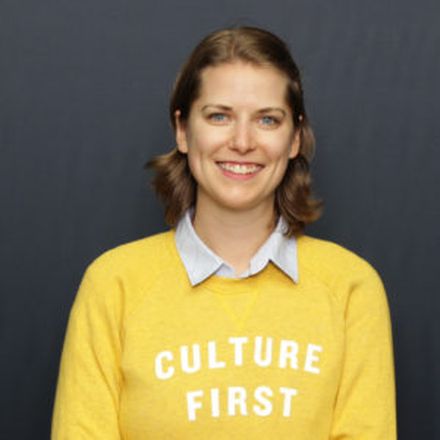How AppNexus is creating a more diverse and inclusive culture

Diversity and inclusion was the topic of discussion at our 2017 People Geekup hosted at AppNexus. Brandon Atkinson, Chief People Officer, began the evening with a discussion about his personal journey as a champion for diversity and inclusion. He also spoke about formalizing the process for building a diverse and inclusive culture at AppNexus. He began with a story - “I was raised by my mother. My sister is my best friend. In school, I wrote my thesis on the transformation of gender roles between the period of the Civil War and World War I. After school, I was a community organizer in low income communities. I believed that I would be an amazing diversity and inclusion superhero coming into AppNexus.”
However, Atkinson quickly learned that creating a diverse and inclusive environment was going to be much more challenging than he anticipated. He shares what he’s learned over the years and how AppNexus is creating a diverse and inclusive culture.
Creating a diversity and inclusion steering committee
When Atkinson joined AppNexus in 2010 as the leader of the Global Services group, the company was only 28 people (they are now just under 1000). As the team grew, he began to notice that they were bringing on mostly white men in their late twenties. Other people noticed as well, and they voiced their concern to Atkinson. “I care deeply about equal opportunity and creating a space where people feel psychologically safe,” says Atkinson, so he and his leadership team set out to make improvements.
“To start, we changed our job descriptions to use gender neutral language, we diversified our interview loops, and we had very open conversations within teams exploring when we don’t feel like we have a ‘big tent culture.' The world ‘inclusion’ wasn’t on the radar as much in 2012!” He also changed some of his own behavior - such as being more mindful about how his word choice impacts culture, making improvements to the onboarding process he designed, and doing his part to avoid “fratty” behavior in the team.
In 2015, Atkinson moved into his current role as Chief People Officer. Company-wide improvements were needed to accelerate progress, so Atkinson teamed up with Nithya Das, SVP, General Counsel, to create a Diversity and Inclusion Steering Committee. The Committee supports in defining and executing AppNexus’ diversity and inclusion strategy, including setting measurable goals. The group has matured over the years and is now made up of a cross-functional, cross-tier group of leaders.
Defining inclusion at AppNexus and setting goals
The D&I Steering Committee’s first task was to define what inclusion means at AppNexus. Their working definition is the following, “AppNexus tries to make each individual feel safe being their authentic self in all aspects of work at AppNexus through inclusion. It’s the responsibility of the company and all AppNexians to create a community where everyone feels involved, valued and respected.”
They also created three pillars for their diversity and inclusion strategy
- Diversify the pipeline
- Galvanize communities
- Create an inclusive and global AppNexus
To work towards these pillars, they take on smaller projects like engaging internally with AppNexians, investing with external partners to improve the pipeline, enhancing corporate practices around compensation and performance management, and measuring diversity and inclusion. A project manager keeps the team aligned on how they’re progressing towards their goals.
Sharing progress on diversity and inclusion
Atkinson keeps the AppNexus Board of Directors and the company’s Operating Team in the loop on how they’re progressing. They also share this information with employees, because AppNexians expect transparency. Atkinson also believes that sharing their progress with the company creates forward momentum because it helps establish “social accountability.” He says, “Google actually did the world a big favor when they started showing their demographics, essentially they established a norm.”
Recently, AppNexus began tracking the diversity of applicants with a focus on creating a more diverse company. People voluntarily provide their demographic information on applications, which allows AppNexus to see how people progress through the hiring process. “It allows us to dig in and have conversations with leaders to unlock bottlenecks in the hiring pipeline,” says Atkinson.
Another recent addition to their diversity and inclusion strategy has been running Culture Amp and Paradigm’s Inclusion survey. In their first survey they identified groups that were experiencing lower levels of inclusion, which has allowed them to start creating positive change. As Atkinson says, “It’s the discussion that you have following the data which is most helpful. The discussion gives you insights, which then allows you to activate change.”
Moving forward to a more inclusive culture at work
“I have been at this since 2012 at AppNexus, thought I was a superhero, I wasn’t; far from it. I am still trying to get better every single day. So, what have I learned? The first thing is improving diversity takes time and you have to know that from the beginning. There is no quick fix,” says Atkinson.
The second most important thing is to make space for open dialogue. Atkinson explains, “People are talking about these things anyway, so create a safe place where people feel comfortable to be vulnerable. People will be able to get through those emotions and process what they are thinking. This also shows that you value them as a person, and it allows them to be more productive as employees.”
Next, foster a mindset where diversity and inclusion is everyone’s challenge, but also everyone’s opportunity. “Too often we focus on the problem side of it,” says Atkinson, “‘Your demographics are bad. You are all white men.’ Okay. It’s true. It’s a fact and it’s a problem and it’s very real. It’s also an opportunity.”
Lastly, Atkinson says the tone and action of top leadership really matters when it comes to diversity and inclusion. He wants to hear leaders giving the same passion to improving diversity and inclusion as they do for building better products and increasing revenue. “Research shows that diversity brings better performing teams and business outcomes. Plus, at the end of the day we want to be a place where everybody feels safe to bring their most authentic self to work and bring their very best ideas,” Atkinson says.






